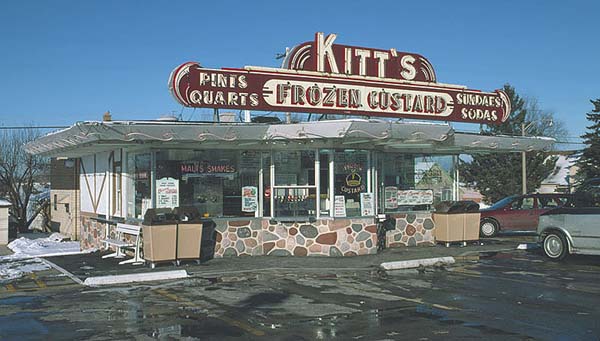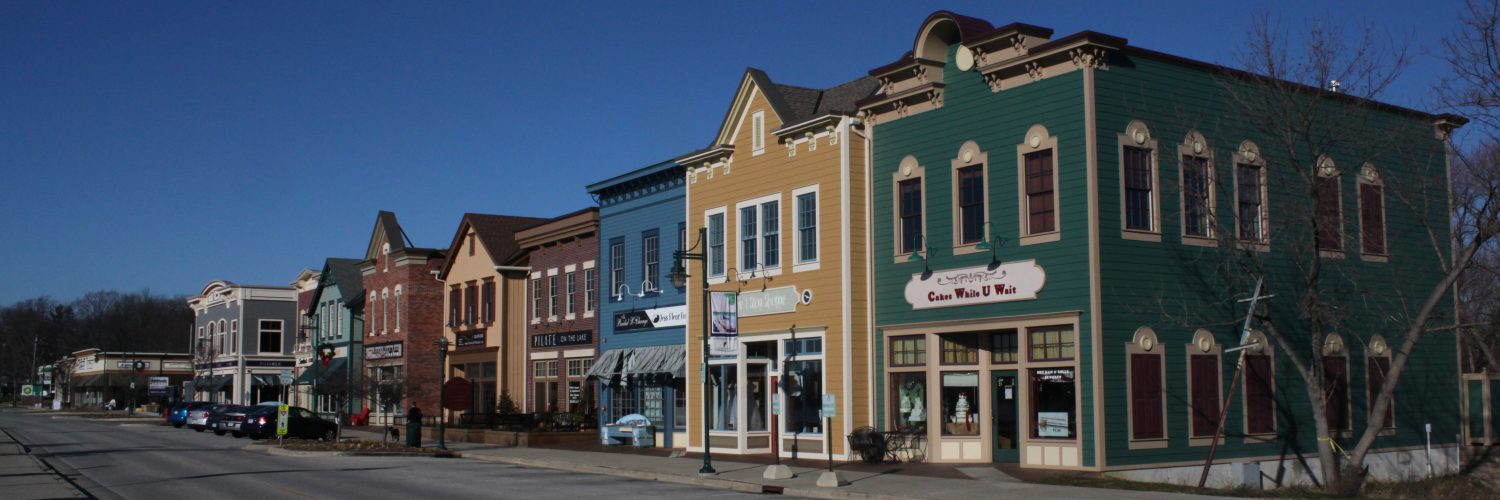Dining out in nineteenth-century Wisconsin was primarily an experience of the wealthy and the traveler. The majority of people who dined out did so at a stagecoach inn. Stage inns were known for staple foods, and included home cooking based on whatever local food was readily available, which often included meat and potatoes, wild game, fish, and pickled and preserved foods during the winter months. Often these restaurants served a transient clientele that were associated with conspicuous consumption and overindulgence, and the restaurants themselves were seen as decadent and sinful.

Many of Wisconsin’s drive-in restaurants specialize in frozen custard. This Kitts drive-in is located at 7000 West Capitol Drive in Milwaukee. Courtesy of Jim Draeger, personal collection.
Before the 1920s, the automobile tourist had few dining options, especially places that were appropriate for women and children. The exponential growth of automobile travelers in the 1920s caused a new development in roadside dining. Soon food stands, followed by drive-ins and family restaurants, appeared along the roadside offering automobile travelers a variety of dining options.
